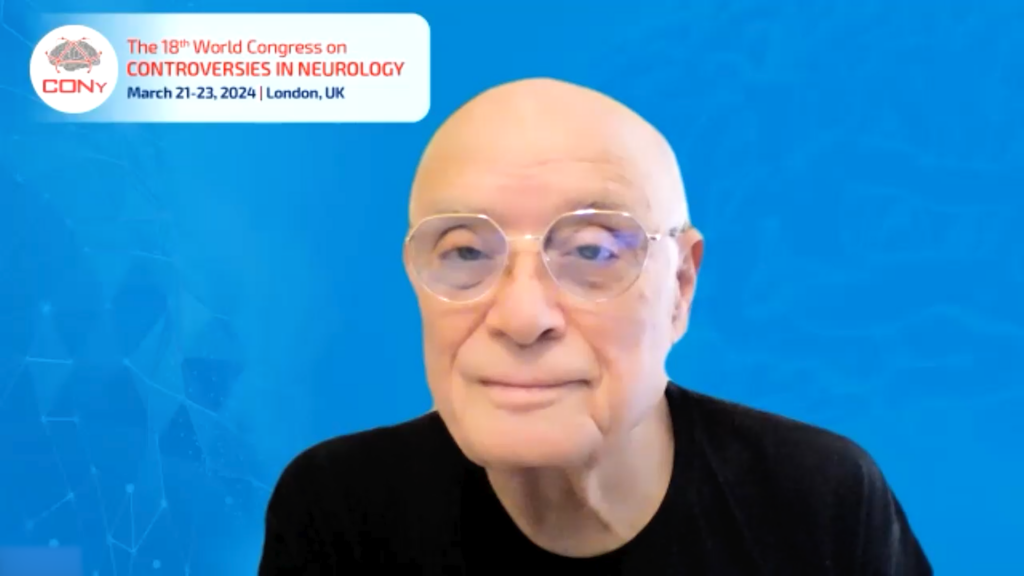The 70th Annual American Academy of Neurology (AAN) Meeting was held on April 21–27, 2018, in Los Angeles. In this insight, we discuss the highlights of the presentations on spinal muscular atrophy.
Spinal muscular atrophy (SMA), an inherited condition that leads to loss of motor function, is the leading genetic cause of death in infants and toddlers. The cause of the disease is a mutated or missing SMN1 gene, leading to reduced SMN protein levels and a selective dysfunction of motor neurons.1 The SMN2 gene also produces some of the SMN protein, which has led to research into gene therapy aiming to modify the mRNA splicing of the SMN2 gene and force it to code for higher percentage of full-length SMN protein.
An orally administered investigational small molecule drug, RG7916 (Roche and Genentech in collaboration with PTC Therapeutics) modulates the SMN2 gene splicing to increase levels of SMN protein. Preliminary data was presented from part 1 of the ongoing FIREFISH clinical trial (NCT02913482), the dose-finding portion of the study. The study involved 21 babies with type 1 (infantile) SMA, the most severe type with an average survival in a similar cohort of only 10.5 months before death or the need for permanent breathing support. At all dose levels, treatment with RG7916 resulted in an increase in SMN protein levels. For the highest dose, the levels were up to 6.5 times higher after 4 weeks of treatment compared with levels at the start of the study. In addition, during the duration of the study to date, no babies have lost the ability to swallow, and none have required a tracheostomy or permanent ventilation. At the time of analysis, 19 of the babies were alive; the two deaths were disease-related and not related to the drug. No safety issues were reported. The second phase of this study, which will assess efficacy, is now recruiting.2
Another study, JEWELFISH (NCT03032172) aims to establish the safety, tolerability and pharmacokinetics of RG7916 in patients aged 12–60 years who have previously participated in a study with a therapy targeting SMN2 mRNA splicing. An abstract presented at the meeting described interim data from 8 patients who had received RG7916 for up to 32 weeks. RG7916 was found to be safe and well tolerated, with no drug-related safety findings leading to withdrawal from the study. Preliminary data following RG7916 treatment showed an up to 4-fold increase in the levels of SMN protein increase at 4 weeks.3
A third study on RG7916 assessed the tissue distribution of the drug and increased SMN proteins level in animal models, and concluded that that the SMN protein increases seen in patients’ blood following RG7916 treatment are likely to be associated with parallel SMN protein increase in CNS and muscle.4
A number of outcome measures are used in clinical studies of investigational agents for the treatment of children and adults with SMA. Among them are the Children’s Hospital of Philadelphia Infant Test of Neuromuscular Disorders (CHOP INTEND), a validated motor outcome measure designed for weak infants with type 1 SMA. A study presented at the AAN meeting found that CHOP INTEND may also be a sensitive outcome measure in patients age 7–40 with severe type 2 SMA.5
Nusinersen is an antisense oligonucleotide drug that modifies pre-mRNA splicing of the SMN2 gene; it is the first US Food and Drug Administration (FDA)-approved treatment for SMA. Clinical studies have demonstrated its benefit in children, but efficacy in adults has not been established. A presentation at the AAN meeting focused on the clinical use of nusinersen in 57 adults. Qualitative improvement was seen in the majority (85%) of patients in outcome measures including CHOP-INTEND, Revised Upper Limb Module (RULM), Expanded Hammersmith Functional Motor Scale (HFMSE), timed “up & go” test (TUG), and 6-minute walking test (6MWT).6 The lack of efficacy data on adults, together with the cost of treatment has hindered the process of making nusinersen available to adults. As a result, insurance and hospital administration have rigorous approval requirements prior to initiating treatment. A single centre study involving 29 adults with SMA reported good outcomes with nusinersen, but highlighted the need to for a dedicated team to approve and administer treatment.7
While new treatments are proving beneficial in the treatment of patients with SMA, there remains a need for sensitive biomarkers to monitor disease status and therapeutic response. Lean mass is an established outcome measurement in neuromuscular disorders, though little data is available on adults with SMA. Dual-energy X-ray absorptiometry (DXA) is a safe and inexpensive tool for measurement of body composition. An analysis of the valproic acid in ambulant adults with SMA (VALIANT) study (NCT00481013) found that lean mass as assessed by DXA correlated well with muscle strength, mobility, compound muscle action potential (CMAP), and function in adults with SMA.8
Other studies are investigating mitochondrial dysfunction as a key pathophysiological mechanism underlying SMA and potential therapeutic target. Olesoxime is an orally-administered, mitochondria-targeting agent that promotes survival and function of motor neurons, muscle and other cell types. A recent study assessing the efficacy, safety and tolerability of olesoxime in patients aged 3–25 years with type 2 or non-ambulatory type 3 SMA (NCT01302600) found that patients treated with olesoxime maintained motor function over 24 months, whilst the placebo group declined.9 Participants were eligible for a follow-up, open-label study (NCT02628743) to assess the long-term safety and efficacy of olesoxime. Positive findings on the long-term study were announced at the meeting. Open-label treatment showed stabilisation of motor function over 12 months, while treatment discontinuation resulted in a substantial decline. Olesoxime was generally safe and well tolerated at the dose assessed.9
Richard Finkel (Nemours Children’s Hospital), recipient of this year’s Sidney Carter Award in Child Neurology, spoke to us on the topic of his presentation during the AAN 2018 Presidential Plenary Session, entitled: Spinal Muscular Atrophy Is a Treatable Neurodegenerative Disease.
References
1. Farrar MA, Kiernan MC. The genetics of spinal muscular atrophy: progress and challenges. Neurotherapeutics. 2015;12:290–302.
2. American Academy of Neurology (AAN). Preliminary study suggests drug may help babies with spinal muscular atrophy. Available at: www.aan.com/PressRoom/Home/PressRelease/1642 (accessed 2 May 2018).
3. Chiriboga C, Mercuri E, Fischer D, et al. Preliminary evidence for pharmacodynamics effects of RG7916 in JEWELFISH, a study in patients with spinal muscular atrophy who previously participated in a study with another SMN2-splicing targeting therapy. Neurology. 2018;90(15 Suppl):S46.003.
4. Poirier A, Weetall M, Ratni H, el al. Relationship between central and peripheral SMN protein increase upon treatment with RO7034067 (RG7916). Neurology. 2018;90(15 Suppl):S46.007.
5. Kichula E, Duong T, Glanzman A, et al. Children’s Hospital of Philadelphia Infant Test of Neuromuscular Disorders (CHOP INTEND) feasibility for individuals with severe spinal muscular atrophy II. Neurology. 2018;90:15 (Suppl) S46.004.
6. Day J, Wolford C, MacPherson C, et al. Nusinersen efficacy in adults with spinal muscular atrophy. Neurology. 2018;90(15 Suppl):S46.001.
7. Elsheikh B, Arnold W, Mezache L, Kissel J. Nusinersen treatment for adults with spinal muscular atrophy; a single center experience. Neurology. 2018;90(15 Suppl):S46.006.
8. Nagaraj A, Arnold W, King W, et al. Evaluation of lean mass through DXA scanning and the correlation to functional outcomes in adults with SMA. Neurology. 2018;90(15 Suppl):S46.005.
9. Muntoni F, Buchbjerg J, Bertini E, et al. A long-term, open-label follow-up study of olesoxime in patients with type 2 or non-ambulatory type 3 spinal muscular atrophy who participated in a placebo-controlled phase 2 trial. Neurology. 2018;90(15 Suppl):S46.002.











